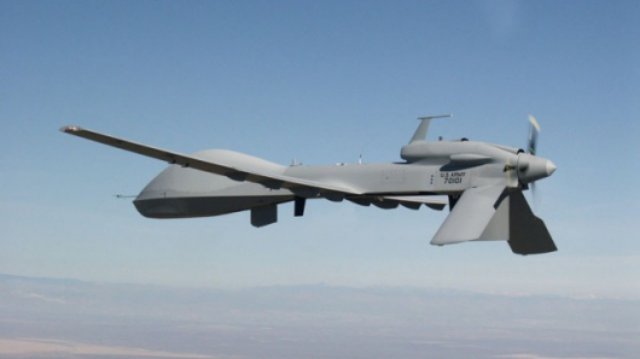The Air Force Sustainment Center and General Atomics have reached an enterprise-level, public-private partnership agreement which allows the two organizations to partner in the maintenance of unmanned aircraft systems, including the Predator/Reaper and the Army’s version of the aircraft, the Gray Eagle.
The agreement, signed Nov. 9 by Lt. Gen. Bruce Litchfield, AFSC commander, is the first center-wide UAS partnership agreement implemented since the stand-up of the Air Force Sustainment Center in June 2012.
General Atomics is a lead manufacture of UAS platforms and maintenance work on those platforms may be performed at all three AFSC logistics complexes in Georgia, Oklahoma and Utah.
Noel Anderson, who works at the Warner Robins Air Logistics Complex Business Office, at Robins AFB, Ga., and a team from across the Air Force Sustainment Center negotiated the partnership agreement, which is expected to bring new workloads to all three complexes.
The WR-ALC is expected to begin work on UAS batteries in 2014 and interim modem assemblies in 2015. The battery workload is estimated to bring in 5,000 repair hours and grow to 9,600 repair hours by 2016. The modem workload is estimated to bring in 2,600 repair hours in 2015, growing to 4,500 in 2016. By the end of fiscal 2016, Warner-Robins will have more than 15,000 repair hours from the Predator/Reaper/Gray Eagle workload, Ms. Anderson said.
So far, WR-ALC is the only complex to enter into a local implementation agreement with General Atomics, but the team anticipates that a future agreement at the Ogden Air Logistics Complex at Hill AFB, Utah, could allow work on UAS landing gear, and at the Oklahoma City Air Logistics Complex at Tinker AFB, Okla., an agreement could allow work on UAS small engines.
“Public-private partnerships allow government organizations and private industry to work as a team, bringing unique capabilities to the mission and warfighters, whether that’s technology infusion, new innovation to equipment and processes or advanced skills and knowledge gain to the workforce,” said Earl Williams, an AFSC Logistics Directorate program analyst.
Before Air Force Materiel Command implemented its 5-Center construct, each AFMC air logistics complex would enter into individual partnership agreements based upon its requirements. These agreements took anywhere from 12 to 16 months to complete. With the enterprise partnering agreement in place, each of the three logistics complexes, which are part of AFSC, can execute implementation agreements with General Atomics and bring workload into the ALCs in a much shorter amount of time.
“We anticipate the new standard partnering process will shave 8 to 10 months off of the time it has historically taken to put partnering agreements in place. Now that this standard process has been implemented across the AFSC enterprise, there will be one team negotiating these agreements as opposed to three separate negotiation activities,” said Shannon Wagner, AFSC Logistics Directorate program analyst.
This is the second enterprise-level partnership agreement the center has entered.
“Without the collaboration and leadership at Warner Robins Air Logistics Complex, this partnership wouldn’t have come to fruition,” said Gilbert Montoya, Director of Logistics at the Air Force Sustainment Center. “We are looking forward to additional enterprise level partnerships with major private industry partners in the future.”
Source: US Air Force

